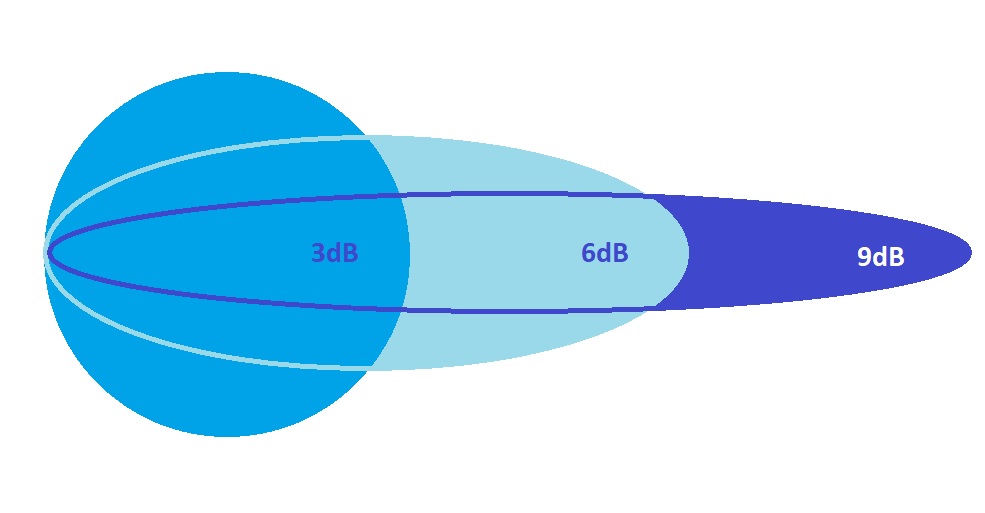Difference between dB, dBi and dBm
Introduction
The terms dB, dBm and dBi are often used interchangeably and hence incorrectly because they each mean different things (although from the context it's often obvious what someone means).
for example, There's no such thing as a "5dB Antenna". This document gives a summary of the meaning of each.
Description
dB - Relative measure between two power outputs
dBm - Power Output (alternative to mW)
dBi - Gain of an antenna relative to an ideal isotropic antenna (The Antenna which radiaton patterna is a perfect sphere).
dB: is the difference (gain or loss) between two power levels, so if the difference is 0dB, then the two power levels are the same.
A 3dB gain is a doubling in power but the scale is logarithmic so that a 6dB gain is a 4times multiple,
12dB would be 16times and so on. Given two powers, the gain/loss in dB can be calcuated by the formula 10log x/y (where x and y are the two outputs).
dB is useful when measuring the loss of wireless cabling or connectors.
dBi: dBi = dB(isotropic, A 'perfect' antenna would output its signal in a perfect sphere around itself): The forward gain of an antenna, measured in decibels (dBi), The dBi value reflects the antenna's directional / beamwidth characteristics, i.e., directional Vs omnidirectional:
Generally, the higher the gain (dBi), the narrower the beamwidth and it becomes a more directional the antenna.
A true isotropic aerial doesn't actually exist but actually an isotropic pattern isn't necessarily the most useful pattern.
Therefore dBi is a term that is used when measuring the relative antenna gain of devices.
In the context of wireless, you will see dBi used as the gain of all antennas. The power isn't increased, but it is concentrated in a narrower pattern. This increase compares to the isotropic (sphere) model is stated in dBi.
The narrower the beam (in both X and Y or veritcal and horizontal planes) the more power is radiated into the beam pattern. This is covered in more depth in our guide on aerial gain.
dBm dB(mW) It is the actual power output in milliwatt. 0dBm is equal to approximately 1mW, and 20dBm is approximately 100mW.
We use dBm when we are measuring power emitted from amplifiers. We measure that power in milliwatts which is typically abbreviated as mW.
When used in audio work the milliwatt is referenced to a 600 ohm load, with the resultant voltage being 0.775 volts. When used in the 2-way radio field, the dB is referenced to a 50 ohm load, with the resultant voltage being 0.224 volts.
There are times when spec sheets may show the voltage & power level e.g. -120 dBm = 0.224 microvolts.
Note : We will be happy to receive corrections and suggestions on this article, but if you are a wireless engineer, we appreciate that this guide is not applicable for all given scenarios.
The above applies to common usage in Wireless and for the purposes such users are likely to need them for.
The usage varies by industry to application.

Pic: Gain Vs Distance model